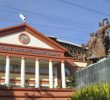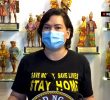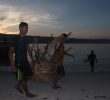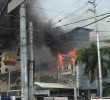The background of the victims and location of attacks
The majority of the victims of political killings have been unarmed civilians, members of the legal political left, primarily Bayan Muna, Anakpawis and Bagong Alyansang Makabayan (BAYAN – New Patriotic Alliance), but including activists from a range of leftist sectoral or community organizations. Those killed have also included members of leftist groups who have split from the CPP, including the Kilusan para sa Pambansang Demokraysa (KPD – Movement for National Democracy). Both men and women have been targeted, with the victims including community organizers, church workers and priests, human rights activists, trade union and peasant leaders, journalists, indigenous peoples activists, elected local officials and political activists.
Attacks have occurred nationwide, though human rights and other organizations have noted periodic, marked increases in particular regions, notably Mindoro Oriental, Eastern Visayas and Central Luzon (including Bulacan, Pampanga, Bataan and Nueva Ecija provinces). According to local human rights groups, these regional fluctuations were allegedly linked to the assignment of Major General Palparan as commanding officer in these regions. Major General Palparan has denied any involvement in such killings.
Methodology of attacks and suspected perpetrators
The predominant method of attack has been shootings by unidentified assailants, mostly riding tandem on a motorcycle, who often obscure their identity with “bonnet” face masks or helmets. At times the assailants are supported by other men on motorcycles nearby or use unmarked vans. Many attacks were described as having been carried out in a “professional” manner, with the killers striking in broad daylight in public places, firing a limited number of shots targeted at the head or trunk of the body of the targeted person, before escaping unimpeded.
According to reports, a significant number of attacks have been proceeded by warnings or death threats, and by patterns of surveillance by alleged security force personnel which reportedly led up to targeted attacks in or near the victims homes or offices, or while they undertook routine journeys. Following the killing of at least three activists in northern Luzon 2005, leaders from the Cordillera Peoples Alliance (CPA) and Bayan Muna-Cordillera, reported that they had been informed by sources within the AFP that they had been included on a military list as targets for attack. They described subsequent intensive surveillance or “casing” operations conducted by suspected military intelligence personnel, including being followed, vehicles carrying men (at times covering their faces) stationed outside their office or driving repeatedly by, and apparent attempts to break-in to their offices or cars.
In other cases, well-established AFP counter-insurgency techniques appeared to be linked to subsequent attacks. The practice of “zoning”, whereby the military target a village or district believed to be influenced by the CPP-NPA, order the inhabitants to assemble to listen to lectures, at times using former insurgents now being used as military “assets”, about the communist threat so as to encourage informants and identify alleged communist supporters within the community, reportedly leads to the public labeling of legal left activists, or their inclusion on military “orders of battle”.
Once named, the threat of subsequent assassination attacks by unidentified men is markedly increased. In this manner Tarlac City Councillor Attorney Abelardo Ladera shot on the highway in central Luzon in 2005, had reportedly been named in a news briefing as an NPA contact in the region, while Jose “Pepe” Manegdeg, shot dead in Ilocos Sur in November 2005, had been labeled by the AFP as a NPA supporter and had received death threats.
Extrajudicial Killings









